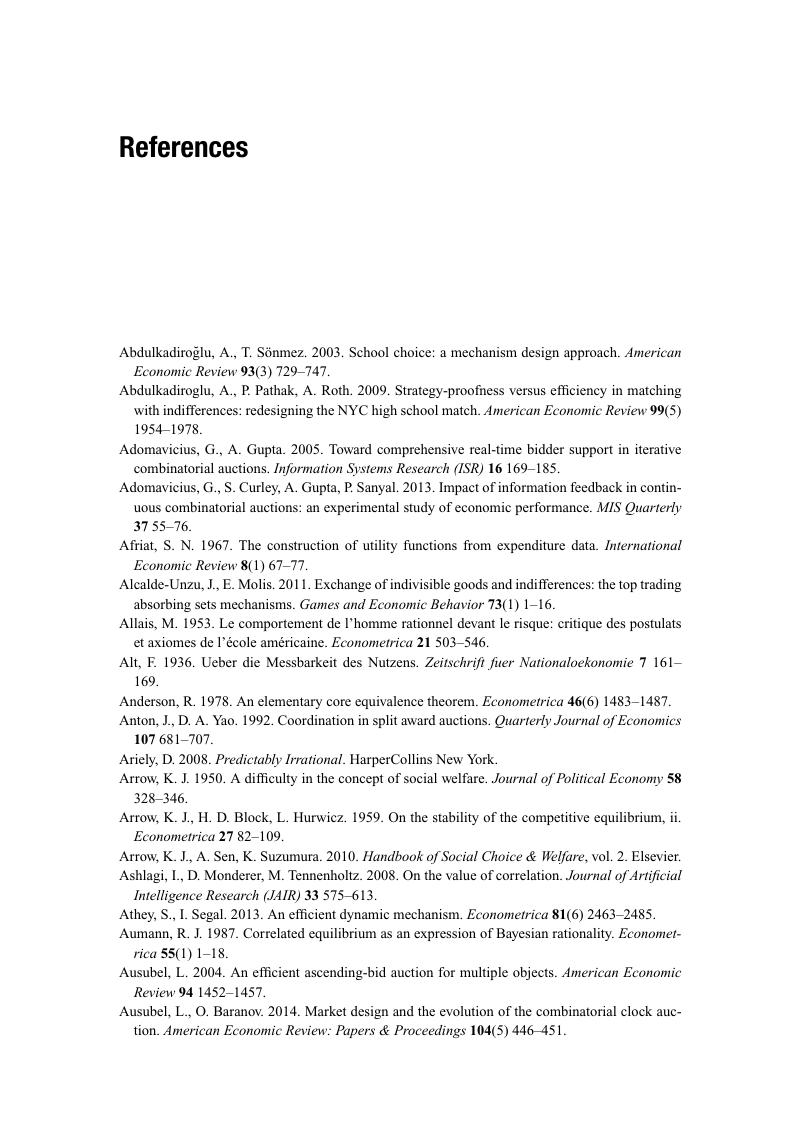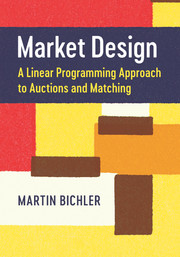References
Published online by Cambridge University Press: 08 December 2017
Summary

- Type
- Chapter
- Information
- Market DesignA Linear Programming Approach to Auctions and Matching, pp. 268 - 280Publisher: Cambridge University PressPrint publication year: 2017

